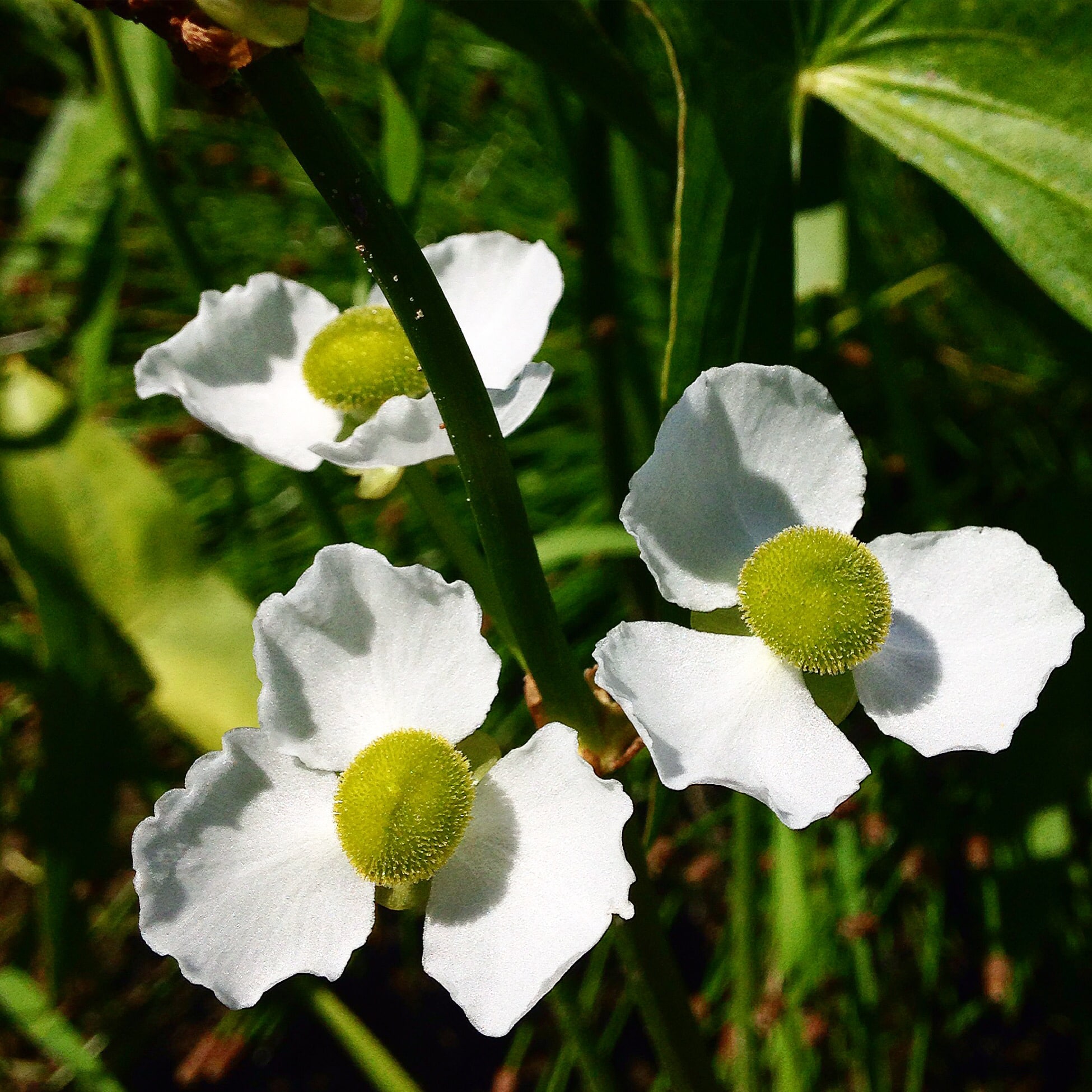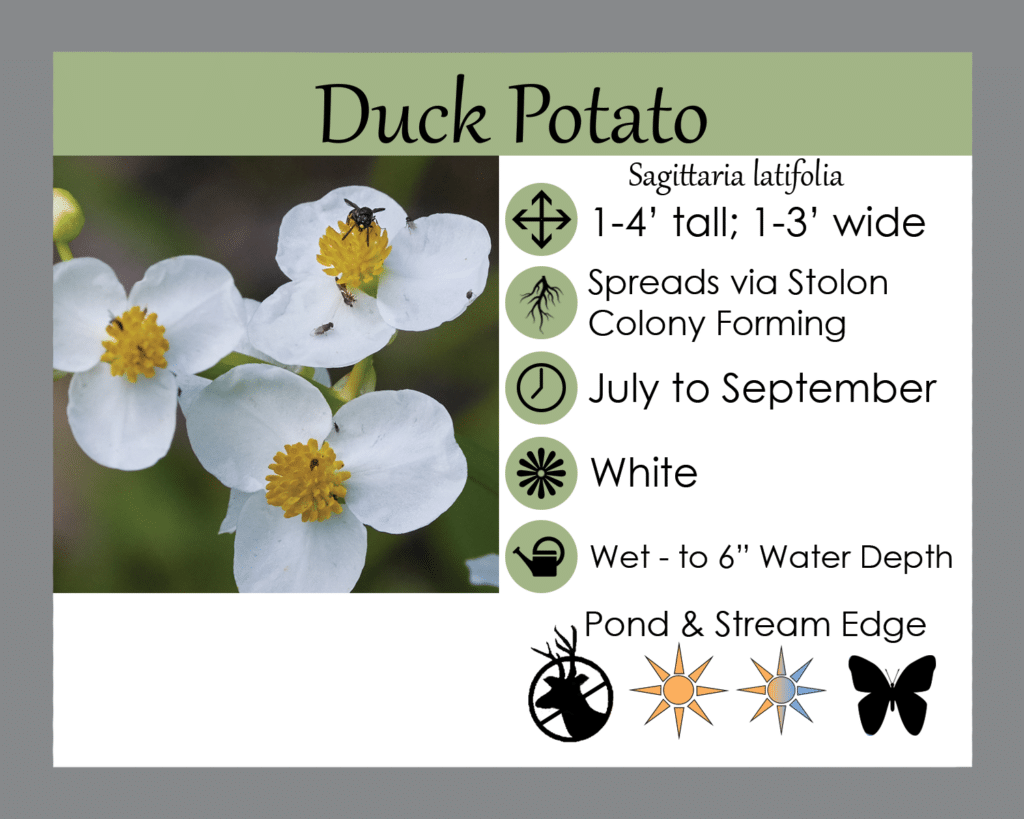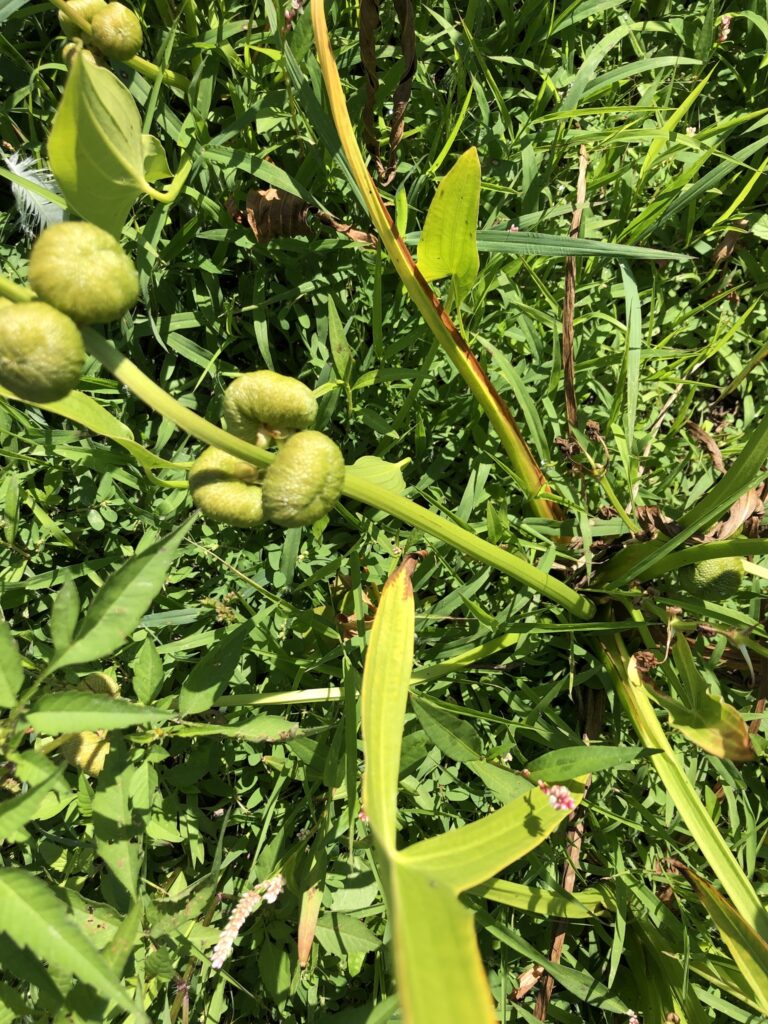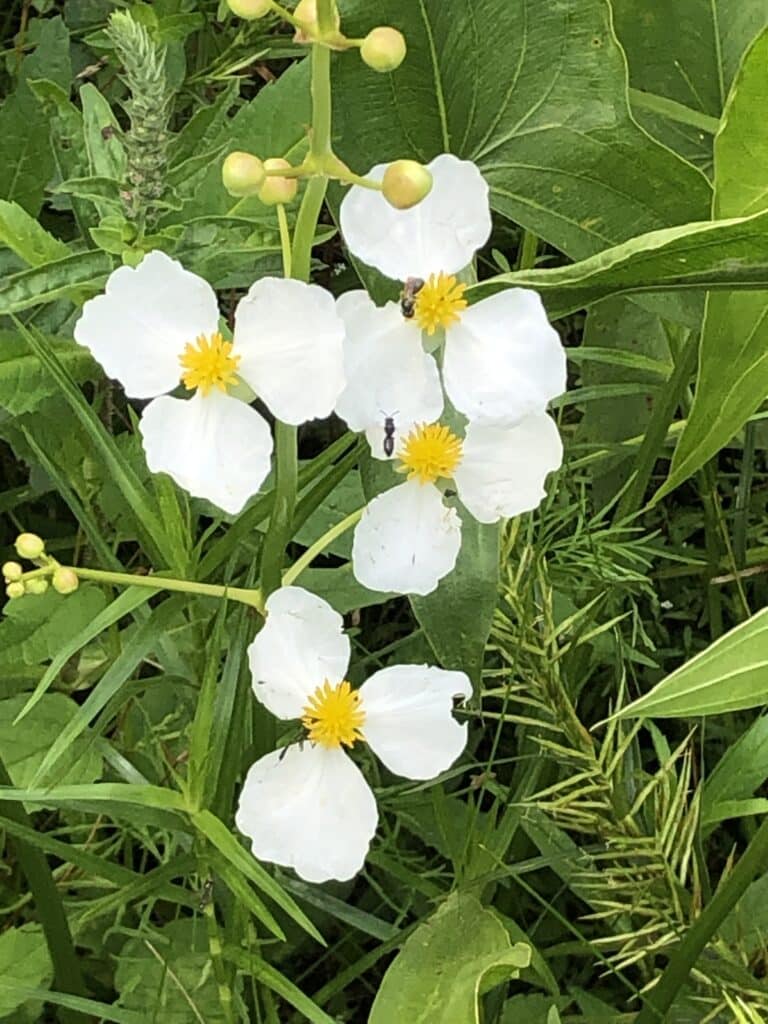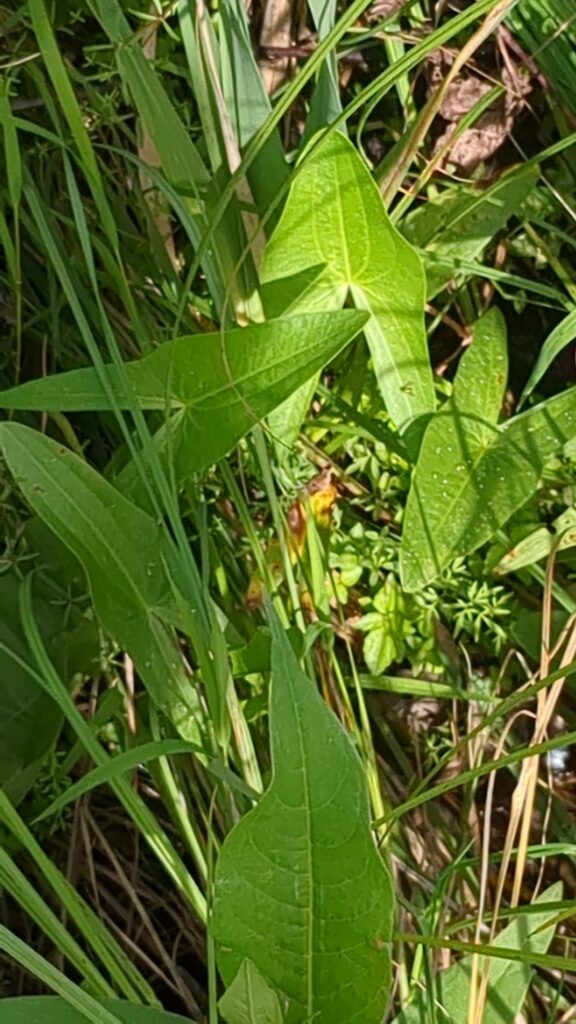Maryland Native Plants for Ponds
Sagittaria latifolia – Duck Potato
Sagittaria latifolia, also known as, arrowhead, duck potato, or wapato, is a vigorous, deciduous, marginal aquatic perennial that typically grows 1-4’ tall. It has arrowhead-shaped leaves as well as three-petaled white flowers from July to September. This plant commonly grows submerged in shallow water as well as in wet muddy banks. While this plant flowers best in full sun it can also handle part shade. Flowers are dioecious; male flowers have bushy yellow center stamens whereas female flowers have green centers. For planting, place tubers or runners in mud at the margins of a pond, stream bank, or in containers in a water garden, either along the shore or in up to 6-12” of water. Duck Potato reproduces by reseeding itself or by forming clonal plants from the tubers. While colonies of plants sometimes develop at favorable sites, flowers can be cut back before seeds develop to control spread.
The common names duck potato and wapato refer to the round, starchy, golf ball-sized tubers that form at the ends of underground plant runners (rhizomes). These tubers will float to the surface if dislodged from the mud and are also edible. Subsequently they may be boiled or baked and eaten as a potato-like food. Historically, Native Americans have been known to harvest and consume these tubers. Additionally the tubers are an important food source for waterfowl and the seeds are attractive to many water birds and snapping turtles.

